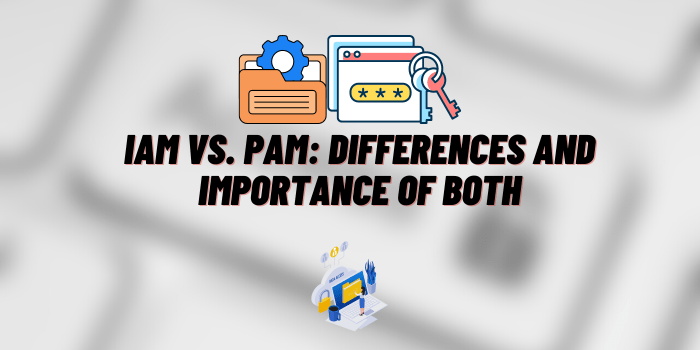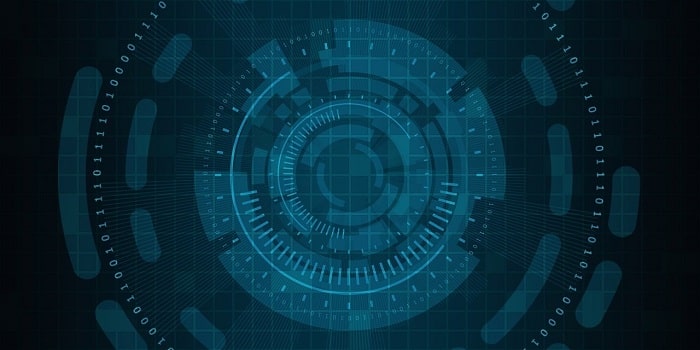IAM vs. PAM: Understanding the Differences and Importance of Both
Modern day businesses deal with more complex networks that are hard to protect against cyber threats. Every day the cyber threat landscape expands and cyber criminals use advanced methods and launch sophisticated cyber attacks. To deal with increased cybersecurity risks, businesses need to build a good cybersecurity posture that includes enhanced security solutions. In this regard, Identity and access management (IAM) and Privileged access management (PAM) solutions are the must-have components for robust cybersecurity architecture.
Both frameworks are access management and network security solutions and they bring many benefits to the table that remarkably strengthen security and enable complete control over user access to corporate networks, critical systems, and sensitive resources. In this article, we will examine both solutions in great detail and pinpoint their key differences and importance. Let’s start with an introduction to IAM and PAM solutions.
Introduction to Identity and Access Management (IAM) and Privileged Access Management (PAM)

Identity access management (IAM) is a framework that allows companies to regulate access, assign access privileges, authenticate and authorize users, monitor activities, and enable accounting functions. IAM system administrators assign access privileges to each user, device, and application, and allow them to access only required resources for their roles and daily tasks. Also, IAM architecture authorizes and authenticates users via multi factor authentication (MFA), single sign on (SSO), and biometrics tools. Simply, IAM systems help businesses assign adequate access rights, control who can access which resources, verify authorized users’ identities, limit what they can do with the resources, and monitor user behavior and activity.
Privileged access management (PAM) solution is a subset of IAM that concentrates on safeguarding privileged accounts. PAM framework deals with specific user groups that have elevated levels of user permissions to critical resources, databases, backend systems, and areas that contain highly sensitive data. PAM tools enforce the principle of least privilege and allow companies to secure, control, manage, and monitor privileged users’ access to sensitive systems. PAM solutions add another layer of security by using several measures like storing privileged account credentials in a secure vault, enabling dynamic authorization, session tracking, and automated provisioning.
IAM vs. PAM: An Overview of Their Roles
When we look at the roles of IAM and PAM Solutions, we can see that the IAM framework is used for authenticating, authorizing, and accounting for users, servers, applications, or systems meanwhile PAM framework is used for securing, controlling, and managing privileged users accounts and enabling robust security for critical resources and sensitive data.
Simply, IAM solutions serve every employee, contractor, third-party partner, and customer and it allows companies to assign the right level of access to them and authenticate and authorize their identities. But, PAM serves users who require elevated levels of access to sensitive data and critical company infrastructure.
IAM Explained: Features and Benefits

Implementing identity access management (IAM) solutions can bring many benefits to businesses. Core features of the IAM framework are accounting, authentication, authorization, role-based access controls (RBAC), analytics, automated provisioning & de-provisioning, password management, and monitoring. IAM employs authentication methods like MFA, SSO, and biometrics.
Authenticating users with these tools enables secure access and strengthens the security of digital user identities. Having a password management feature helps businesses enforce strong passwords and demands regular password updates. Also, with password management, administrators can automate password requests and save time.
With RBAC, the system administrator can assign access permission based on employees’ roles and limit everything else. IAM solution helps businesses achieve enhanced network security against internal and external threats. Also, this framework allows businesses to reduce IT operating costs by simplifying network access management and automating on-boarding and off-boarding processes.
Other than these, IAM has an accounting function for logging access, recording user login information, and managing an identity database. As for monitoring capabilities, the IAM framework can track users’ behavior and activities and alert admins when there is suspicious or malicious activity on the network. This allows rapid response to threats before they can cause further damage to company infrastructure. Lastly, IAM helps businesses meet compliance requirements and become cybersecurity compliant companies.
PAM in Detail: Its Purpose and Advantages
PAM solutions’ main purpose is to secure, control, and manage access to privileged accounts. PAM enables great visibility over privileged accounts, it tracks their activities and monitors and records sessions from a single location. This enables real-time monitoring and reviewing of risky behaviors, when the system detects a malicious or abnormal activity, it alerts admins immediately.
Also, PAM prevents users from sharing privileged accounts and keeps privileged account credentials in a separate secure vault, and restricts access to this area. This way, PAM reduces the risks of privileged account attacks and secures user accounts with elevated permissions. On top of these, this framework enables dynamic authorization features that allow admins to set up time limits for accessing critical systems.
Comparing IAM and PAM: Key Differences

IAM and PAM frameworks can be used interchangeably as they are closely related and share similar features, but they aren’t the same. Between the two solutions, there are distinctive differences. Firstly, the IAM framework focuses on controlling, managing, and monitoring the network security of the entire organization while PAM concentrates on securing and managing access to accounts that have elevated permissions. Simply, IAM covers the security of a wider attack surface, whereas PAM covers the security of much smaller and more significant attack surfaces.
Secondly, when compared to IAM, PAM solutions have stricter authentication protocols. For example, users who have administrative access permission must authenticate their identities in every session, and they are obligated to follow dynamic authorization policies. Also, pam systems might require manager approval as well for privileged user access.
Lastly, PAM systems require more resources and higher investment than IAM systems. Also, the PAM framework has an additional set of controls like session recording as it handles the security of high-valued surfaces.
Why IAM Matters for Comprehensive Security
In the era of digitalization, businesses must manage and control access of employees, third-party partners, service accounts, and customer profiles that have different levels of access permissions within a corporate network. Also, businesses must secure users’ identities and inhibit cybercriminals from using compromised accounts to reach corporate networks. One of the main purposes of IAM solutions is to prevent unauthorized users from gaining access to corporate resources and make sure only authorized users can access the right resources. That’s why IAM solutions are quite important for comprehensive security.
The Critical Role of PAM in Protecting Privileged Accounts

Privileged users and administrator accounts are the prime targets of cybercriminals. That’s why these accounts require extra protection and they need to be observed closely. PAM solutions bring additional sets of controls for privileged accounts and help businesses secure, manage, monitor, and record the activities of these accounts. In this regard, the PAM framework plays a critical role in protecting privileged accounts.
Conclusion: The Synergy of IAM and PAM in Cybersecurity
In today’s world, all sizes of businesses must secure identities, and privileged accounts and manage access. Although IAM and PAM solutions can be used interchangeably, businesses should implement both. Using both solutions can create a layered defense against cyber attacks and strengthen security remarkably. Most importantly, these solutions mitigate the risks of data breaches and keep sensitive data safe and sound.






